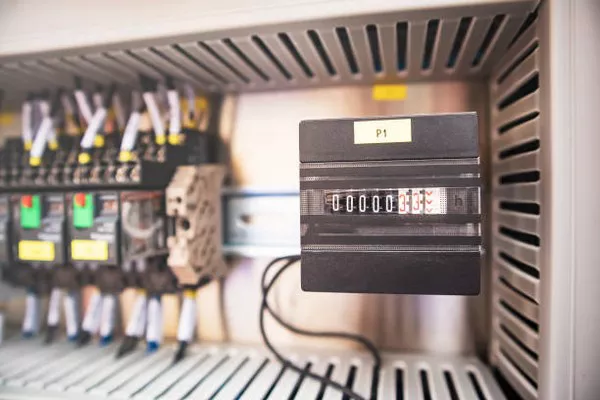Commercial refrigeration is an essential cornerstone of the foodservice industry, playing a pivotal role in preserving the freshness and safety of perishable goods. From large-scale cold storage facilities to display cases in supermarkets, the technology behind commercial refrigeration is a marvel of engineering that ensures our meals are kept at optimal temperatures. In this article, we delve into the inner workings of commercial refrigeration systems, exploring the processes, components, and principles that keep our perishables cool and crisp.
The Fundamental Principles of Commercial Refrigeration
At its core, commercial refrigeration relies on the principles of heat transfer and the properties of refrigerants. There are three primary modes of heat transfer involved:
Conduction: The transfer of heat through direct contact between two objects with different temperatures.
Convection: The movement of heat through a fluid (liquid or gas) as hotter portions rise and cooler portions sink.
Radiation: The emission of electromagnetic waves, including infrared radiation, which carries heat energy.
Commercial refrigeration systems harness these principles to create a controlled environment that removes heat from the refrigerated space, keeping temperatures low and preserving the freshness of the stored items.
Key Components of Commercial Refrigeration Systems
Compressor: The heart of the refrigeration system, the compressor is responsible for pressurizing the refrigerant gas and pumping it through the system. As the refrigerant moves through the compressor, its pressure and temperature increase.
Condenser: The high-pressure, high-temperature refrigerant gas flows into the condenser, where it releases heat and condenses into a high-pressure liquid. This is typically achieved by using a fan or water-cooling system to dissipate the heat into the surrounding environment.
Expansion Valve: The high-pressure liquid refrigerant then passes through the expansion valve (also known as the throttling valve), which reduces its pressure and causes it to expand rapidly. This expansion leads to a drop in temperature, cooling the refrigerant.
Evaporator: The cold, low-pressure refrigerant then enters the evaporator, where it absorbs heat from the surrounding air or the items being refrigerated. This absorption causes the refrigerant to evaporate and transform into a low-pressure gas once again.
Refrigerant: Refrigerants are fluids with specific properties that make them suitable for absorbing and releasing heat efficiently at different temperatures. Common refrigerants include hydrofluorocarbons (HFCs), hydrochlorofluorocarbons (HCFCs), and natural refrigerants like ammonia and carbon dioxide.
The Refrigeration Cycle: A Sequence of Processes
The operation of commercial refrigeration systems revolves around a continuous cycle of processes, allowing for the efficient removal of heat from the refrigerated space. Here’s how the cycle unfolds:
Compression: The compressor pressurizes the low-pressure, low-temperature gas refrigerant, causing it to become a high-pressure, high-temperature gas.
Condensation: The high-pressure gas refrigerant flows into the condenser, where it releases heat to the surrounding environment or a cooling medium. As a result, the refrigerant condenses into a high-pressure liquid.
Expansion: The high-pressure liquid refrigerant passes through the expansion valve, which rapidly reduces its pressure. This expansion results in a drop in temperature, transforming the refrigerant into a low-pressure, low-temperature mixture of liquid and gas.
Evaporation: The cold refrigerant enters the evaporator, absorbing heat from the surroundings or the items in the refrigerated space. This heat absorption causes the refrigerant to evaporate and become a low-pressure gas once again.
Return to Compression: The low-pressure gas refrigerant is then drawn back into the compressor, where the cycle begins anew.
Applications of Commercial Refrigeration
Commercial refrigeration finds applications in various sectors, including:
Food Retail: Supermarkets, grocery stores, and convenience stores utilize refrigerated display cases and walk-in coolers to maintain the freshness of perishable goods such as fruits, vegetables, dairy products, and meat.
Foodservice Industry: Restaurants, cafes, and catering services rely on commercial refrigeration to store ingredients safely and efficiently, minimizing waste and ensuring food quality.
Cold Storage Warehouses: Large-scale refrigerated warehouses store vast quantities of goods, from frozen foods to pharmaceuticals, at controlled temperatures to prevent spoilage and maintain product integrity.
Industrial Processes: Industries requiring precise temperature control, such as pharmaceuticals, chemicals, and electronics manufacturing, employ commercial refrigeration to ensure product quality and process efficiency.
Beverage Dispensing: Beverage coolers and dispensers used in bars, restaurants, and convenience stores employ refrigeration to maintain beverages at ideal serving temperatures.
Efficiency and Environmental Considerations
In recent years, increased emphasis has been placed on the environmental impact of refrigeration systems, particularly the potential for refrigerants to contribute to global warming. Many countries and industries are transitioning to more environmentally friendly refrigerants, such as hydrofluoroolefins (HFOs) and natural refrigerants like carbon dioxide and ammonia.
Furthermore, advancements in technology have led to the development of energy-efficient commercial refrigeration systems. These systems incorporate features like variable-speed compressors, improved insulation materials, and advanced control algorithms to optimize energy consumption while maintaining consistent temperature levels.
Conclusion
Commercial refrigeration systems are the unsung heroes that ensure our food remains fresh, safe, and ready for consumption. Behind the scenes of these systems lie intricate processes of heat transfer and phase changes, driven by components such as compressors, condensers, expansion valves, and evaporators. As the foodservice and distribution industries continue to evolve, so does the technology behind commercial refrigeration, resulting in more sustainable, efficient, and reliable solutions that keep our perishables chilled and our businesses thriving.

